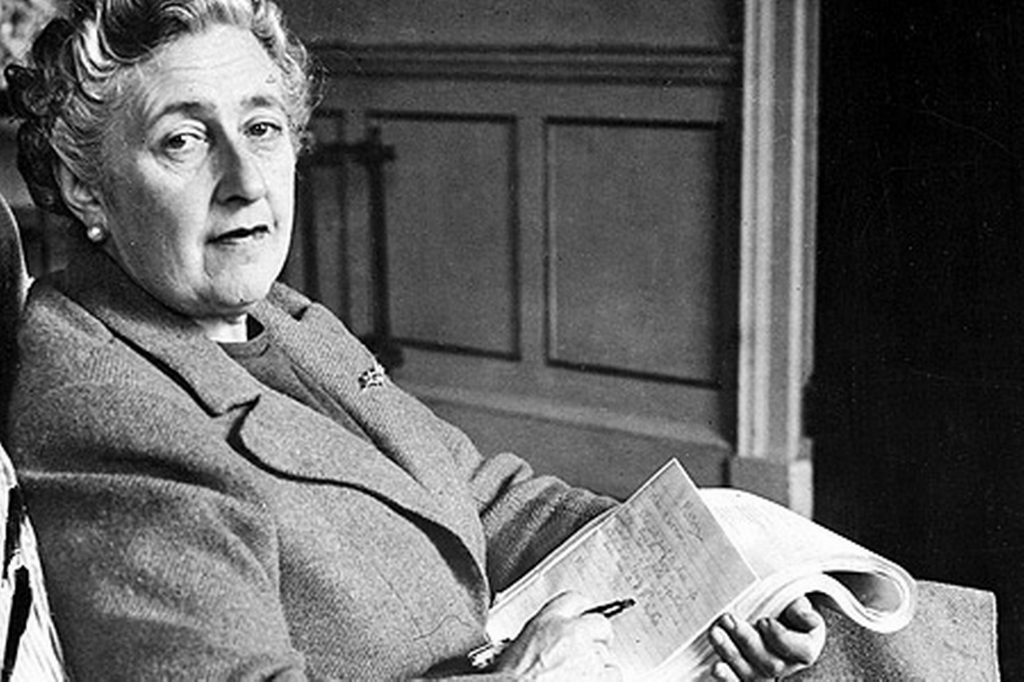
PHOTO: electricliterature.com
It was a mystery for the ages, one that drew in the entirety of Britain’s police force and the likes of Dorothy Sayers and Sir Arthur Conan Doyle. It began like one of the famed author, Agatha Christie’s, own murder-mystery masterpieces: shortly after 9:30 pm, on December 3, 1926, at the height of the roaring twenties and of Agatha’s esteemed career, she disappeared without a trace. The story goes that on that fateful night, she kissed her seven-year-old daughter goodnight, and then wandered out of her house and drove off in her car. Agatha wouldn’t be seen again for eleven days.
Within the first day of her disappearance, a manhunt was launched. More than one-thousand policemen were assigned to the case, and hundreds of civilians who either knew her personally or loved her writing joined as well. Airplanes soared over England in an attempt to search her out, alive or dead, but they couldn’t find her. Within hours, crime writers Dorothy Sayers (Who wrote Lord Peter Whimsey), and Sir Arthur Conan Doyle (Sherlock Holmes) were involved in the search. The police hoped that with the two writers’ extensive knowledge of crime solving, it wouldn’t take long to find Christie. But even Doyle and Sayers couldn’t find anything of use. Sayers searched for clues as to her disappearance, but came up empty-handed. Doyle, a known sensationalist, took her glove to a medium, but that, too, was fruitless.
They found her car later that day, abandoned on the edge of a slope. There was no evidence that Agatha had been hurt or that she had been in any auto accident. Curious and curiouser. By the third day, Agatha was still missing, and people began to toss theories around. The most popular one, of course, was that she’d been murdered or kidnapped. What better story than a crime writer killed by a villain straight out of the kinds of stories she liked to write about? Many people thought her husband had done it. Archie Christie was known to have a mistress. Maybe he had gotten rid of his wife so that he could live in peace with the woman he was having an affair with. Still others thought that the famous writer had committed suicide. Her car was found not very far away from a spring called “The Silent Pool”, where two children were known to have drowned. The theory surfaced that she might have purposefully drowned herself, but that seemed unlikely. Agatha was at the height of her career, having just finished The Murder of Rodger Ackroyd. Her books were selling extremely well, and she had a young daughter who she loved dearly. what reason would she have to do such a thing? And, as the search continued, no body was discovered in the pool. So that theory was quickly thrown out.
Exactly eleven days after her disappearance, Agatha Christie was in Harrogate, in the Swan Hydro hotel. She was recognized by one of the hotel’s banjo players. She appeared to be in good health. She’d dressed up and participated in the hotel’s dances and social events. The police were alerted, and they found her there, alive and safe, but with no memory of what had happened. The most mysterious thing about the entire thing, perhaps, was that Agatha couldn’t recognize herself in newspaper photographs and she had checked into the hotel under a false name, the name of her husband’s mistress: Theresa Neele. She had no luggage, but didn’t seem in any hurry to leave. When her husband came to take her home, she insisted on changing into her evening dress before seeing him.
Nobody knows exactly what happened in those eleven days that she was missing. Agatha never spoke about the disappearance. When she went home, she divorced her husband for cheating on her and went on to remarry and live a happy and fulfilling life.
Some people have speculated that Agatha really was suicidal and that she suffered amnesia due to emotional trauma. It’s a plausible theory, but we’ll never really know what happened to her during those eleven days. It’s a mystery that no crime writer could have ever come up with on their own.

